- Home
- Neal Asher
The Soldier: Rise of the Jain, Book One
The Soldier: Rise of the Jain, Book One Read online
PRAISE FOR NEAL ASHER
“Asher is a modern master of sci-fi.”
—Starburst magazine
“Projects the terror-haunted sensibility of our time into a future of limitless brutality . . . Asher displays great virtuosity.”
—The New York Times
“Incredible beings wielding vast alien technologies, devastating space battles, and mind-blowing science . . . transcends the borders of morality, existence, and spacetime itself.”
—Publishers Weekly, starred review
“A wide-screen special-effects extravaganza, a space opera featuring gods and monsters . . . Doc Smith and Olaf Stapledon in a blender, turned up to eleven, with the contents splattering across the ceiling.”
—Russell Letson, Locus
“Asher has an amazing talent for world-building, for writing larger-than-life characters, for weaving gripping plots and for imagining exotic alien races and wonderful technologies. Huge ships! Big weapons! Space battles! Ground battles! Treason! Revenge! This is New Space Opera at its best.”
—Sense of Wonder
“Violence, of course, is what Asher does best—by presenting a stunning, brutal spectacle and taking his readers right into the middle of it. He expertly ratchets up the narrative tension and excitement with high-tech mayhem and technological razzle-dazzle. And it’s a genuine pleasure to watch him.”
—Kirkus Reviews
“The multifaceted, complex storytelling rewards a dedicated reader with serious tension and mindblowing sci-fi thrills.”
—Manhattan Book Review
“In all Neal Asher novels the main attractions . . . are great world building with both technological marvels and weird creatures, fast paced, no-nonsense action and . . . the outstanding cast of characters.”
—Fantasy Book Critic
“Exciting, intricate, and unabashedly futuristic . . . space opera filled with [Asher’s] trademark technological marvels and elaborate world building.”
—Booklist
“Blends large portions of horror and mystery into an SF tale of revenge and redemption . . . a complex and satisfying work.”
—Library Journal, starred review
“Hardboiled, fast-paced space opera . . . Asher’s books are similar to the world of Iain M. Banks’ Culture universe, but the Polity is arguably a much darker and more vicious environment—and all the better for it.”
—The Register
“[The Polity books] are SF novels that mix early cyberpunk’s insouciance with the widescreen baroque spectacle of space opera and the pacing of an airport action-thriller.”
—SFX
“A dark future universe full of vibrant spaceships, people, creatures and intelligence. Highly enjoyable and highly addictive, Asher has a new fan.”
—SF Book Reviews
“Space opera that is entertaining, slick, sometimes even jaw-dropping . . . pretty hard to beat.”
—Infinity Plus
THE
SOLDIER
RISE OF THE JAIN BOOK ONE
BOOKS BY NERL ASHER
AGENT CORMAC
Gridlinked
The Line of Polity
Brass Man
Polity Agent
Line War
SPATTERJAY
The Skinner
The Voyage of the Sable Keech
Orbus
NOVELS OF THE POLITY
Shadow of the Scorpion
Prador Moon
Hilldiggers
The Technician
TRANSFORMATION
Dark Intelligence
War Factory
Infinity Engine
RISE OF THE JAIN
The Soldier
THE OWNER
The Departure
Zero Point
Jupiter War
SHORT-STORY
COLLECTIONS
Runcible Tales
The Engineer
The Gabble
NOVELLAS
The Parasite
Mindgames: Fool’s Mate
Cowl
THE
SOLDIER
RISE OF THE JAIN BOOK ONE
NEAL
ASHER
Night Shade Books
New York | New Jersey
Copyright © 2018 by Neal Asher
First Night Shade Books edition published 2018
Published in the United Kingdom by Tor, an imprint of Pan Macmillan, a division of Macmillan Publishers Limited.
All Rights Reserved. No part of this book may be reproduced in any manner without the express written consent of the publisher, except in the case of brief excerpts in critical reviews or articles. All inquiries should be addressed to Night Shade Books, 307 West 36th Street, 11th Floor, New York, NY 10018.
Night Shade Books is an imprint of Start Publishing LLC.
Visit our website at www.nightshadebooks.com.
10 9 8 7 6 5 4 3 2 1
Library of Congress Cataloging-in-Publication Data:
Names: Asher, Neal L., 1961- author.
Title: The soldier / by Neal Asher.
Description: New York: Night Shade Books, 2018. | Series: Rise of the Jain ; book one
Identifiers: LCCN 2017046492 | ISBN 9781597809436 (hardcover : acid-free paper)
Subjects: | GSAFD: Science fiction. | Fantasy fiction.
Classification: LCC PR6101.S54 S67 2018 | DDC 823/.92—dc23
LC record available at https://lccn.loc.gov/2017046492
eISBN: 978-1-59780-640-4
Cover artwork by Adam Burn
Cover design by Claudia Noble
Printed in the United States of America
For all those scientists and technologists studying and manipulating the components of existence. Those who, while politicians prate and ideologues shriek, constantly and quietly improve the human condition. I salute you.
ACKNOWLEDGEMENTS
Many thanks to those who have helped bring this novel to your e-reader, smartphone, computer screen or that old-fashioned mass of wood pulp called a book. At Pan Macmillan these include Bella Pagan, Natalie McCourt, Phoebe Taylor, Neil Lang, Don Shanahan and Rosie Wilson, as well as freelancers Claire Baldwin and Steve Stone, and others whose names I simply don’t know. At Night Shade Books these include Cory Allyn, Oren Eades, Joshua Barnaby, and freelancers Adam Burn and Claudia Noble.
CAST OF CHARACTERS
Angel: A humanoid called a “legate” by its creator, who was the rogue AI Erebus and enemy of the Polity. With its master and creator dead, Angel’s empty mind is searching for new purpose. The shadowy presence of the Wheel seems to be now directing its actions, but to what end is unclear to Angel.
Captain Cogulus: A centuries-old captain from the world of Spatterjay, known by most as Cog. Just like other humans of that world, he is a hooper, the term used to describe those infected by the Spatterjay virus. Cog is also related to the founder of that world, the infamous pirate Jay Hoop.
The Client: An expert weapons developer and the last remaining creature of a civilization called the Species. Her kind were annihilated centuries ago by the alien prador and the Client is bent on revenge.
Orlandine: The haiman overseer of the defence sphere project. Orlandine controls all the AIs and state-of-the-art weapons platforms that surround and guard the accretion disc, looking to contain the lethal concentration of Jain technology gathered there.
Trike: Like Cog, Trike is a hooper, with the characteristic size and strength of such men from the Spatterjay world. Trike also displays signs of insanity, which the Spatterjay virus feeds and enhances if not kept under control. Trike’s wife, Ruth, is the only one who can calm Trike and help keep th
e madness at bay.
GLOSSARY
augmented—To be “augmented” is to have taken advantage of one or more of the many available cybernetic devices, mechanical additions and, distinctly, cerebral augmentations. In the last case we have, of course, the ubiquitous “aug” and such back-formations as “auged,” “aug-ing-in,” and the execrable “all auged up.” But it does not stop there: the word “aug” has now become confused with auger and augur—which is understandable considering the way an aug connects and the information that then becomes available. So now you can “auger” information from the AI net, and a prediction made by an aug prognostic subprogram can be called an augury.
—from Quince Guide, compiled by humans
bounce gate—A small defensive runcible (U-space gate) installed aboard ships as a countermeasure to U-space missiles. Such missiles can be fired through U-space at a ship and materialize inside it; however, if they appear near a gate, it is the nature of the physics of this technology that the gate will route them through to U-space.
the Clade—It consists of thousands of drones each possessing the head of a polished steel axolotl and a body like a chrome-plated dinosaur spine, each being autonomous but also a component of a swarm AI. The drones had been made during the Polity war against the prador to penetrate pra-dor war machines and take control of them. But something happened post-production that caused them to hive together as a single, psychotic entity, which named itself the Clade.
Dyson sphere—A spherical megastructure built around a star. It has massive living space on its inner surface and completely encompasses and utilizes the output of the star. The Polity Dyson sphere at Cassius is a project 80,000 years away from completion.
first- and second-children—Male prador, chemically maintained in adolescence and enslaved by pheromones emitted by their fathers and acting as crew on their ships or as soldiers. Prador adults also use their surgically removed ganglions (brains) as navigational computers in their ships and to control war machines.
Golem—Androids produced by the Cybercorp company consisting of a ceramal chassis usually enclosed in syntheflesh and syntheskin outer layers. These humanoid robots are very tough, fast and, since they possess AI, very smart.
haiman—The closest amalgam of human and AI possible without the destruction of the human organic brain. The haiman Orlandine is a special case, since she has also amalgamated with Jain tech she made “safe.”
hardfield—A flat force-field capable of stopping missiles and energy beams. The impact or heat energy is transformed and dissipated by its projector. Overload of that projector usually results in its catastrophic breakdown, at which point it is ejected from the vessel containing it. Hardfields of any other format were supposed to be impossible . . .
hooper—A human from the oceanic world of Spatterjay who has been infected with the Spatterjay virus. Commonly passed on through a leech bite, this virus makes its target inhumanly strong, dangerous and long-living.
Jain technology—A technology spanning all scientific disciplines. Created by one of the dead races—the Jain—its apparent sum purpose is to spread through civilizations and annihilate them.
nanosuite—A suite of nano-machines most human beings have inside them. These self-propagating machines act as a secondary immune system, repairing and adjusting the body. Each suite can be adjusted to suit the individual and his or her circumstances.
Polity—A human/AI dominion extending across many star systems, occupying a spherical space spanning the thickness of the galaxy and centred on Earth. It is ruled over by the AIs who took control of human affairs in what has been called, because of its very low casualty rate, the Quiet War. The top AI is called Earth Central (EC) and resides in a building on the shore of Lake Geneva, while planetary AIs, lower down in the hierarchy, rule over other worlds. The Polity is a highly technical civilization but its weakness was its reliance on travel by “runcible”—instantaneous matter transmission gates. This weakness was exploited by the prador.
prador—A highly xenophobic race of giant crablike aliens ruled by a king and his family. Hostility is implicit in their biology and, upon encountering the Polity, they immediately attacked it. Their advantage in the prador/human war had been that they did not use runcibles (such devices needed the intelligence of AIs to control them and the prador are also hostile to any form of artificial intelligence) and as a result had developed their spaceship technology, and the metallurgy involved, beyond that of the Polity. They attacked with near-indestructible ships, but in the end the humans and AIs adapted and their war factories out-manufactured the prador and they began to win. They did not complete the victory, however, because the old king was usurped and the new king made an uneasy peace with the Polity.
reaver—A huge golden ship shaped like an extended teardrop and one of the feared vessels of the prador king’s guard.
runcible—Instantaneous matter transmission gates, allowing transportation through underspace.
USER—The Underspace Interference Emitters are devices that disrupt U-space, thereby stopping or hindering both travel and communication through that continuum. They can also force ships out of it into the real, or realspace. They can consist of ship-mounted weapons, mines and missiles whose duration of disruption is variable.
U-signature—A detectable signature left when a ship jumps into or out of U-space from which the destination or departure point of the ship can be divined. Complex matter when artificially organized down to the pico-scopic level also creates a U-signature, by which it can be identified.
U-space—Underspace is the continuum spaceships enter (or U-jump into), rather like submarines submerging, to travel faster than light. It is also the continuum that can be crossed by using runcible gates, making travel between worlds linked by such gates all but instantaneous.
THE
SOLDIER
1
Haimen are deluded in their belief that their close amalgam of artificial intelligence and human being is an eclectic mix. The simple reality is that AI running in crystal, or some other modern substrate, can incorporate everything it means to be human. Millions of human minds are, for example, recorded to the crystal of Soulbank. With a scrap of genetic tissue and a regrowth tank, they can be resurrected to their previous state with all its faults and foibles. Forensic AIs, when investigating human crime, can record the totality of the perpetrator, including the genetic code that made him. They can review the contents of his mind and its function, and examine him physically down to the microscopic level, before disposal. Human minds have regularly switched from organic bodies to the chassis of a Golem android or some other mechanical body incorporating AI crystal. It is notable how few choose to go back. Also notable is the fact that an AI has never chosen to record itself to a human body. The haiman ethos should be seen for what it is: an ideology with its roots in old religions. It arises from the belief that a human being is more than just a meat machine running some antiquated programming, whose sum purpose is the replication of its genes. A haiman is a cop-out; an inability to take the next step on the evolutionary ladder to full AI.
—from Quince Guide, compiled by humans
MARCO
M arco’s ship surfaced from the faster-than-light continuum of underspace into realspace, and was quickly back within Einstein’s laws. His vessel came to an abrupt stop in the permitted zone lying five light-minutes out from Musket Shot—a dark planetoid whose mass was over 50 per cent lead. Had Marco surfaced his ship just a few thousand miles outside this spot it would have lasted a little over four microseconds, so he had once been told by the Artificial Intelligence Pragus. This was how long it would take the three-foot-wide particle beam to reach the ship from the weapons system watching that area of space. Of course, Pragus could have been lenient and delivered a warning, but any traders who came here never missed that spot. Apparently two other ships had arrived in the proscribed zone. One had been owned by a tourist who had ignored all the warnings delivered to any
one who programmed these coordinates. The other had been a ship controlled by separatists out of the Polity in search of new terror weapons. Both were now cool, expanding clouds of dust.
Or so Pragus said.
“So, what do you have for me, Captain Marco?”
The voice issuing from his console made Marco jerk, then he grimaced, annoyed at his own reaction. He’d made the deal, it was a good one, and certainly not one he could renege on, considering who he’d made it with. He shrugged his shoulders, like he did before going into a fight, and opened full com. The image of a chromed face appeared in the screen laminate before him, and Marco forced a smile.
“Something interesting today,” he replied gruffly.
“I never thought otherwise,” said the AI Pragus.
Interesting was what Pragus needed, what all the AIs out here on the defence sphere needed. Marco had learned the story from another trader who used to do this run before him. Here the AIs, each stationed on a weapons platform, were guarding the Polity from one of the most dangerous threats it had ever faced. Automatic systems would never have been sufficient, for the format of this threat could change at any time. But the problem with employing high-functioning AIs as watchdogs was their boredom. Three AIs had to be pulled out of the sphere in the first years, having turned inward to lose themselves in the realms of their own minds. That was before Orlandine—the overseer of the sphere project—decided on a new approach. She allowed contact with the Polity AI net, and she permitted traders to bring items of interest to sell. AI toys.
“You can come in to dock,” Pragus added.
“Thank you kindly,” said Marco. Then, trying to find his usual humour, added, “Finger off the trigger, mind.”
“I don’t have fingers,” said the AI, and the chrome face disappeared from the screen laminate.
Marco reached down to his touch-console, prodded the icon for the docking program that had just arrived and simply slid it across to the icon representing his ship’s mind. This was the frozen ganglion of a prador second-child—voiceless, remote, just a complex organic computer and nothing like the living thing it had once been. It began to take his ship in, then Marco used the console to pull up another view in the screen laminate to his left.

 The Bosch: A Novella (Polity Universe)
The Bosch: A Novella (Polity Universe)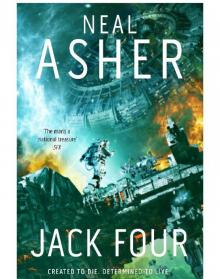 Jack Four
Jack Four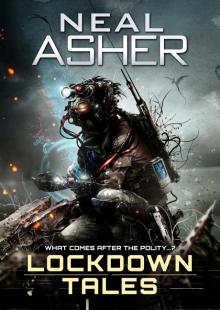 Lockdown Tales
Lockdown Tales The Warship
The Warship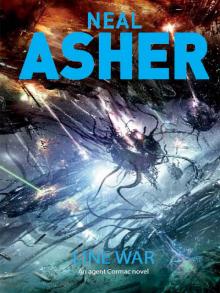 Line War
Line War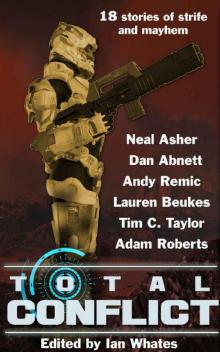 Total Conflict
Total Conflict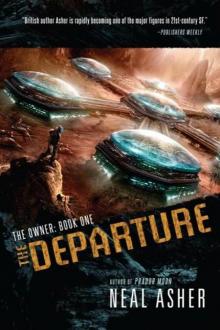 The Departure
The Departure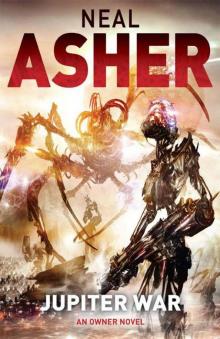 Owner 03 - Jupiter War
Owner 03 - Jupiter War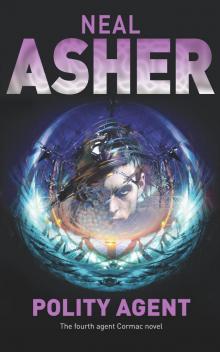 Polity Agent
Polity Agent Prador Moon
Prador Moon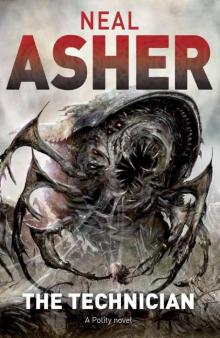 The Technician
The Technician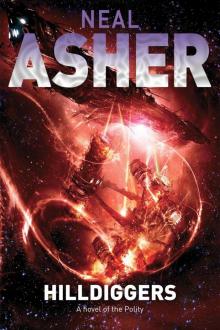 Hilldiggers
Hilldiggers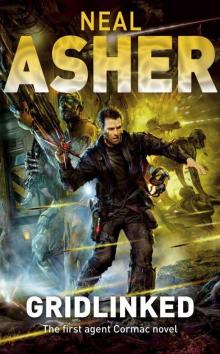 Gridlinked
Gridlinked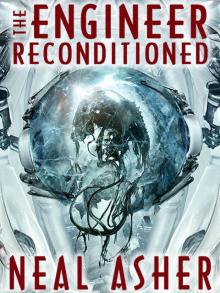 The Engineer ReConditioned
The Engineer ReConditioned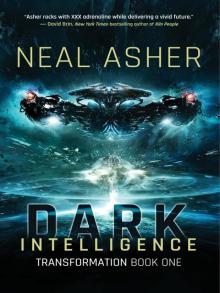 Dark Intelligence
Dark Intelligence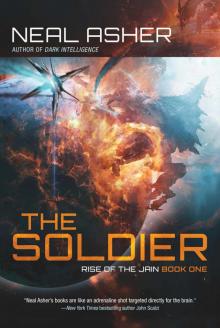 The Soldier: Rise of the Jain, Book One
The Soldier: Rise of the Jain, Book One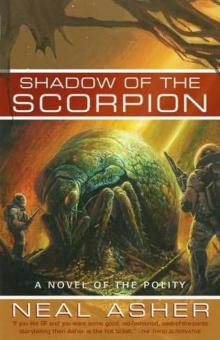 Shadow of the Scorpion p-2
Shadow of the Scorpion p-2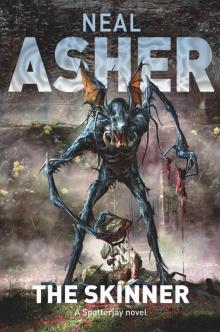 The Skinner
The Skinner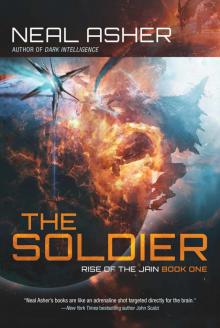 The Soldier
The Soldier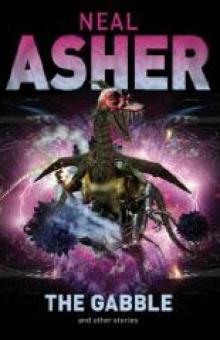 The Gabble p-13
The Gabble p-13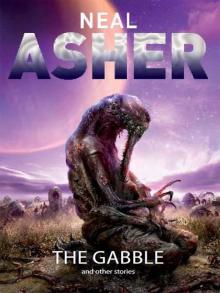 The Gabble and Other Stories
The Gabble and Other Stories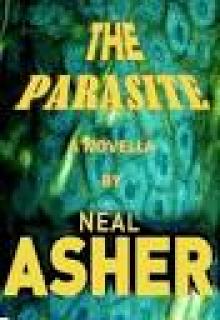 The Parasite
The Parasite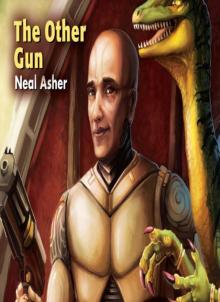 The Other Gun
The Other Gun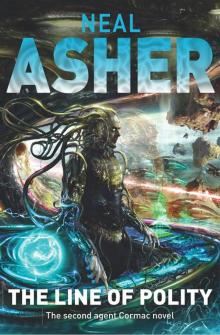 The Line of Polity
The Line of Polity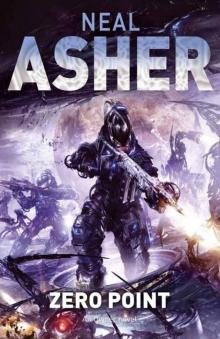 Zero Point (Owner Trilogy 2)
Zero Point (Owner Trilogy 2)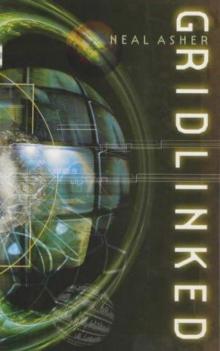 Gridlinked ac-1
Gridlinked ac-1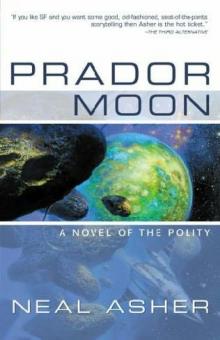 Prador Moon p-1
Prador Moon p-1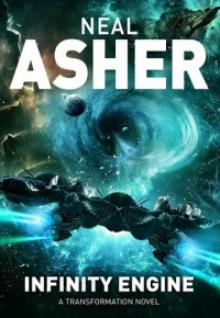 Infinity Engine
Infinity Engine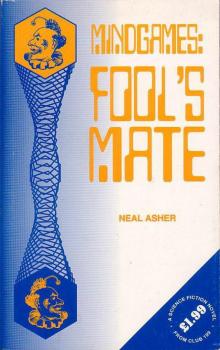 Mindgames: Fool's Mate
Mindgames: Fool's Mate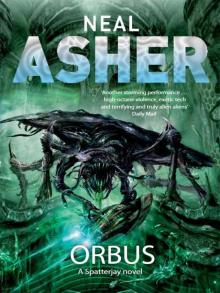 Orbus
Orbus Africa Zero
Africa Zero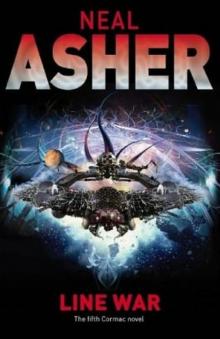 Line War ac-5
Line War ac-5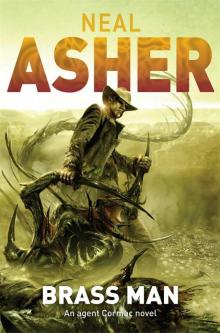 Brass Man
Brass Man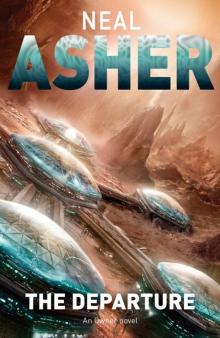 The Departure to-1
The Departure to-1 Cowl
Cowl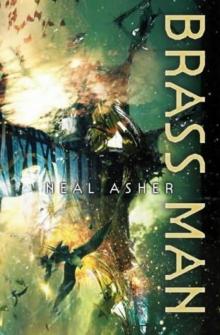 Brass Man ac-3
Brass Man ac-3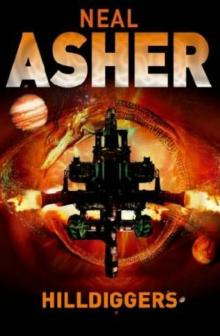 Hilldiggers (polity)
Hilldiggers (polity)![Greg Bear - [Eon Trilogy 1] - Eon (rescan) (v1.0) Read online](http://i1.bookreadfree.com/i2/04/08/greg_bear_-_eon_trilogy_1_-_eon_rescan_v1_0_preview.jpg) Greg Bear - [Eon Trilogy 1] - Eon (rescan) (v1.0)
Greg Bear - [Eon Trilogy 1] - Eon (rescan) (v1.0)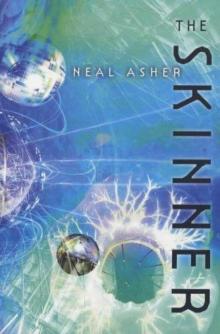 The Skinner s-1
The Skinner s-1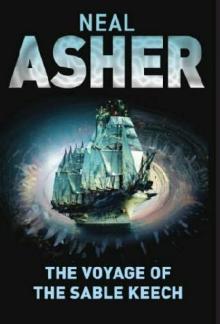 The Voyage of the Sable Keech s-2
The Voyage of the Sable Keech s-2 The Line of Polity ac-2
The Line of Polity ac-2 War Factory: Transformations Book Two
War Factory: Transformations Book Two Polity Agent ac-4
Polity Agent ac-4